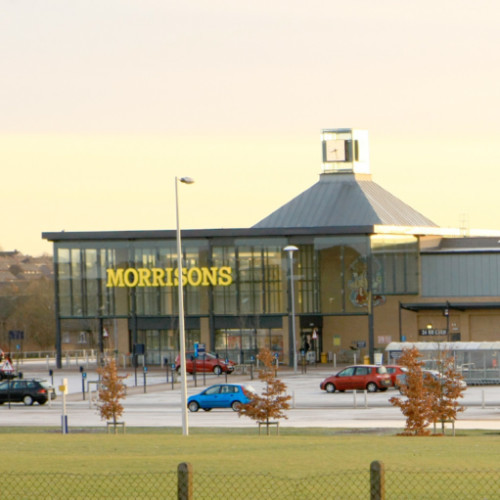Loss-making Morrisons is to abandon new supermarket developments as it looks to challenge the likes of Aldi and Lidl in the growing discount groceries market.
The UK’s fourth-biggest supermarket chain said yesterday it would only invest in new supermarket sites beyond 2015/16 in “exceptional circumstances”, and its focus going forward would instead be on developing its fledgling online offering and convenience store format.
The firm plotted its strategy as it revealed a £176 million plunge into the red in the year to February 2, a stark contrast to the £879m profit it posted the year previous.
Exceptional costs of £903m from write-downs on the value of its stores and the value of its for-sale Kiddicare offshoot played a significant role in the group-wide loss, but sales were also down 2.8% on a like-for-like basis.
Shares dropped 12%, wiping hundreds of millions of pounds off the retailer’s value.
Chairman Sir Ian Gibson said Morrisons had to do more to counter the growing pull of the discount chains.
“In this environment the discount sector has performed strongly, driving much of the market growth,” Sir Ian said.
“We believe that its strong performance is structural, rather than cyclical, as has been the case in previous cycles.
“The rest of the market has been working hard to counter this threat, with particular emphasis on loyalty programmes and personalised couponing areas in which Morrisons has not been able to participate fully to date, due to outdated IT infrastructure and systems.
“Whilst these factors, combined with the fact that we do not yet have a meaningful presence in online and convenience the two fastest-growing channels in the grocery market have clearly held us back, and the overall performance of our core business has been disappointing.”
CEO Dalton Philips said the company was planning to invest £1 billion over the next three years to turn things around.
The strategy will include a major focus on price as customers look for increased value at the checkout, but Mr Phillips insisted Morrisons would not simply replicate the model of the successful discounters.
The firm, which has around 500 supermarkets and 102 smaller-format stores will instead look to increase its digital presence and significantly up its convenience store offering, adding an extra 250,000 ft2 of selling space annually in targeted areas.
However, Mr Philips said the turnaround would not be achieved overnight, and warned that underlying profits for 2013/14 could be between £325m and £375m, less than half the £785m achieved in the financial year just gone.
He said: “We will continue to implement a wide range of measure to address the sales performance of the business and progress our strategic initiatives.
“Our expectations are that the challenging consumer and market environment we saw in 2013 will persist through the coming year,” the chief executive added.
Shares in Morrisons closed the day down 27.8p at 205.2p.
